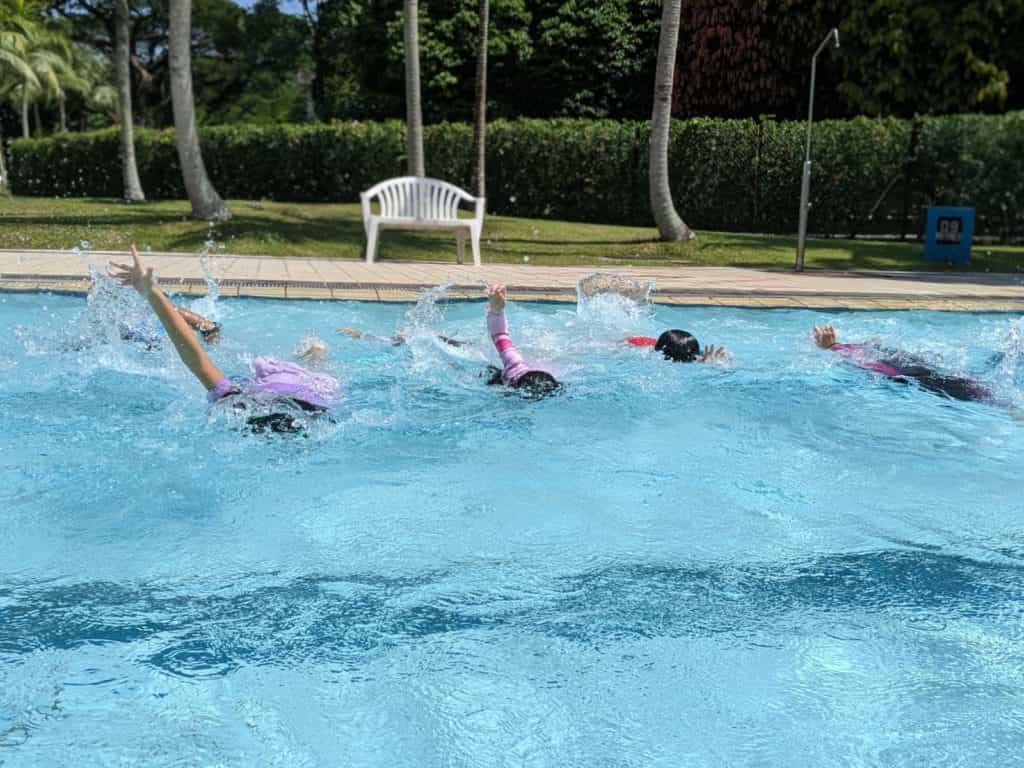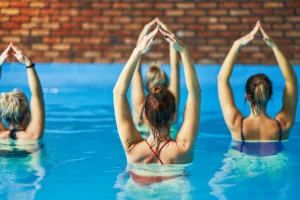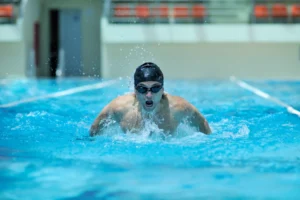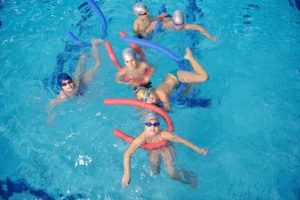Safe Swimming Lessons In Singapore
Swimming lessons Singapore
Swimming lessons Singapore look at more children drowned in recent years. Fatality in drowning for the past five years compared with the previous six years, and many of these cases happened in condominium pools, based on cases seen at KK Women’s and Children’s Hospital (KKH).
Incidents
The hospital saw 94 near-drowning incidents between January 2011 and December last year involving children from below a year old to 15 years old, and 10 drowning cases.
Reports
This is about 17 to 27 submersion cases every year, the hospital said, compared with between one and 14 cases each year between 2005 and 2010.

Place
More than half of these incidents also occurred in condominium swimming pools — 54 cases — the most at any location. All 10 drowning deaths over the past five years took place in private pools such as at condominiums, private homes or hotels, with half of them happening during pool parties.
Drowning
As a result, a child is eight times more likely to die from drowning if he or she is at a pool party, KKH added. In Singapore, it sees about 80 per cent of submersion injuries involving children
Affluence
Sharing these figures at a media conference on Thursday (March 10), Dr Arif Tyebally, deputy head of KKH’s emergency medicine department, said this “worrying upward trend” could be due to factors such as a lack of vigilance from parents and caregivers, rising affluence as more people living in condominiums and even the design of swimming pools.
Factors
For example, pools with “unique shapes” surrounded by trees, plants or Building structures may block the line of vision between a caregiver and the child.
The Trend
“(This trend) is disturbing as we know that all these incidents could have been prevented. Drowning deaths can occur within minutes and even if the child survives, there may be permanent brain damage,” he added
Challenges
In two cases seen by KKH, the children survived but suffered hypoxic brain damage, an irreversible condition due to oxygen deprivation to the brain.
Injuries
Drowning ranks among the top three causes of “death by unintentional injuries” for children, the other two being road traffic accidents and falls.
Risk
Children aged six years and below were found to be at the highest risk, accounting for more than 76 per cent of the incidents. And boys make up about two-thirds.
Health Promotion Board
The hospital is in discussions with the Health Promotion Board to work on further materials, such as a mobile application to educate parents on the dangers of childhood drowning incidents
Case Study
It is also providing information on prevention of childhood injuries to expectant mothers during prenatal talks. Recent cases involving children include a seven-year-old boy who drowned at the Hard Rock Hotel at Resorts World Sentosa last June, when he entered a section of the pool deeper than his height.
Insights
Parents whom TODAY spoke to said it was not uncommon to see parents or caretakers distracted from their children at condominium pools which typically do not have lifeguards. Preventing such incidents, they felt, lies with parents.
Preventive measures
Felicia does not let her two-year-old son out of her sight when he plays in her executive condominium’s baby pool as safety is more importantSafety First
When he goes into the pool he must feel the ground with his feet. He sits down as he goes in to feel the base with his bottom Leow
Madam Leraine Leow, 35, said her two primary school-age children swim in their condominium pool almost every day.
- words of advise
In a few minutes, things can change. Parents should be more well-informed. looking after the child must be there at all times.
Governing Body
Singapore Life Saving Society president Richard Tan said that drowning is a “silent” killer. Children who are drowning cannot yell and shout, contrary to depictions in movies. It takes 20 to 60 seconds of struggling underwater for a child to succumb.
Water Safety
Mr Tan also said he has long urged the authorities to look into having lifeguards at condominium pools.
Playing a part
“That said, parents should always keep constant vigilant watch, not talk to other people while watching their children. Parents need to learn how to swim in order to learn lifesaving techniques Gov stats
Pediatrics recommendations
The Singapore Academy of Pediatrics recommends swimming lessons for all children age 4 or older.
Recommendations
They used to recommend that you not begin formal swimming lessons until kids are at least 4 years old, the age that children are thought to be “developmentally ready” for swim lessons.
Beating the heat
Playing in the water is a great way to beat the heat. And yet every year, kids drown.. 40 percent of those cases were among children ages 1 to 4, and at least half of those deaths occurred in swimming pools.
Professional advise
The good news is that the rate of accidental drowning has decreased in recent decades. This trend may reflect the more widespread adoption of preventive strategies such as pool fencing and swimming lessons.
- Swimming lessons for toddlers
But as swimming programs mature, proliferate, a difficult question remains: At what age is it ideal for children to take swim lessons?
- competency
Kids won’t really become competent swimmers until age 6 or 7, say Eric Landa. He was Singapore swimming Club chief trainer.
“Just like a child slowly progresses from immobile to walking over months,” so starting at 4 or 5 can be helpful
Eric
learning together
Also, parent-and-baby classes offer the opportunity for parents to hear water safety messages that may help protect their children.
Concerns
Concerns have been raised that kids who take lessons too early might develop a false sense of security around water. and therefore be more in danger of drowning than kids who don’t.
Research
The Singapore Association of Pediatrics says children can safely take swim lessons as early as age 1.
Findings
Until 2010, the SAP had specified this number as age 4. but when research showed a reduced risk of drowning in preschoolers who had taken swimming lessons.
Preventive measures
Research found an 88 percent reduction in drowning risk in kids ages 1 to 4 who had taken swimming lessons.
Identification
Researchers identified 61 such drownings and compared the victims to children in the same communities who were similar in age and gender.
Sample size
The sample was indeed small, says study author Ruth Brenner, an investigator at the National Institute of Child Health and Human Development.
Limitations
The study show that swimming instruction reduced risk, she says. Study conducted in China found that swimming lessons reduced drowning risk by 40 percent
Bench marking
Brenner says she doesn’t know of any other studies comparing swimming programs on drowning risk in kids younger than 5.
Swimming Lessons Singapore
Survival programs such as the Swimsafer and little fishes promise to teach children as young as 6 months how to maneuver themselves so they are floating on their backs. You can watch babies doing just this on the companies’ Web sites.
Emotional hurdle
The lessons can present an emotional hurdle for parents, says Ai chi, a pediatrician in Singapore with hundreds of her patients have taken survival swimming lessons, as have her 3 children.
Exception
Especially in a place such as Singapore where water is ubiquitous and drowning occurs with “tragic frequency.”
Appropriateness
As for the developmental appropriateness of survival swimming classes many infants do learn to float on their back by 12 months. “Some don’t get it. They need refresher courses” he says.
Survival of the 60s
The survival strategy has been around since the 1960s and the classes can be found in most communities but it’s hardly mainstream. Neither the lifesaving society nor the SSC are willing to comment specifically on the practice.
Safety awareness
When to start swimming lessons depends in part on your child and your family, says Foong with the Sports Safety Singapore. Is your child emotionally and physically ready for swim lessons? Does your family spend a lot of time near water or on a boat, or is there a pool on your property?
Environment for Swimming Lessons
Swimming lessons Singapore chooses a program comes with its own set of questions with pool safety and design.
Pool Hygiene
Children who swim are exposed to a host of pathogenic germs and babies in particular tend to swallow the water they’re swimming in. Water that is too cold is not good for babies as Foong put it.
Class Size matters besides attention
Swimming lessons Singapore and level of supervision also is important. Swim Safer lessons have no more than 10 students per instructor as Chia, from Sports Singapore says. With younger children or less experienced instructors, a lower ratio is better. A lifeguard should be on duty during a class, she says. “The teacher cannot also act as a lifeguard.”
Read Related Articles

Swimming for Weight Loss: Proven Benefits and Effective Tips
Swimming for Weight Loss: Proven Benefits and Effective Tips Feeling overwhelmed by lifting heavy, pounding pavement for miles and counting every crumb to a few pounds? You can lose weight with swimming to achieve your body goals effortlessly and effectively instead. Swimming is a fun and low-impact activity you may already love as a hobbyist.

How to Swim Breaststroke Properly: Step-by-Step Technique for Beginner
How to Swim Breaststroke Properly: Step-by-Step Technique for Beginner Adult swimming Lessons are becoming a go-to lifestyle activity for many people especially the adventurous souls. At Little Fishes, we provide swimming lessons in Singapore even private classes that aim to make swimming as easy as possible. Adult swimming classes are guided by a well-structured swimming program are

5 Must-Have Qualities of a Great Swimming Instructor
In search of a wonderful swimming teacher for your child who is just beginning to swim, or perhaps it’s your first time at the water as an adult? No matter what, the choice of a swimming instructor can either enhance or spoil the entire experience. There is no shortage of options, so selecting one is
